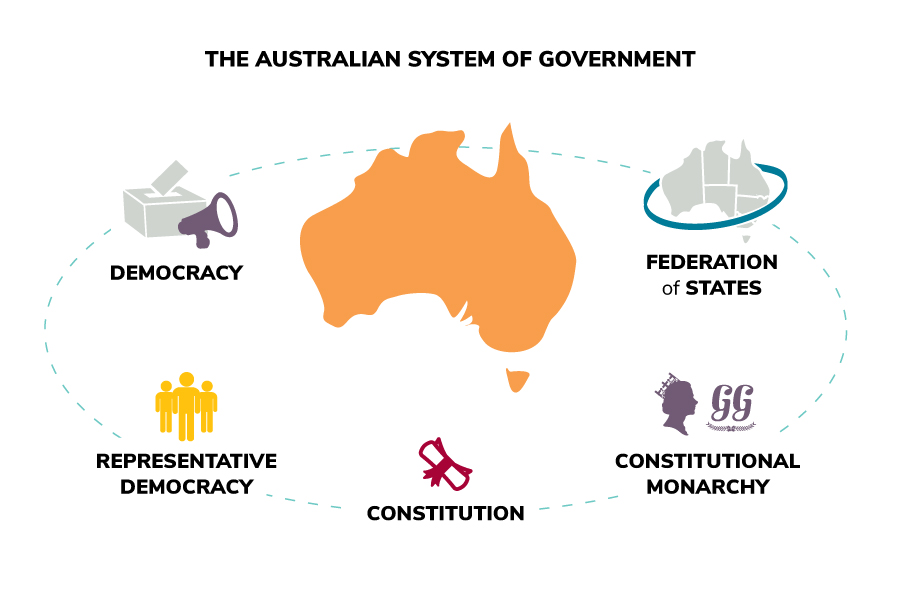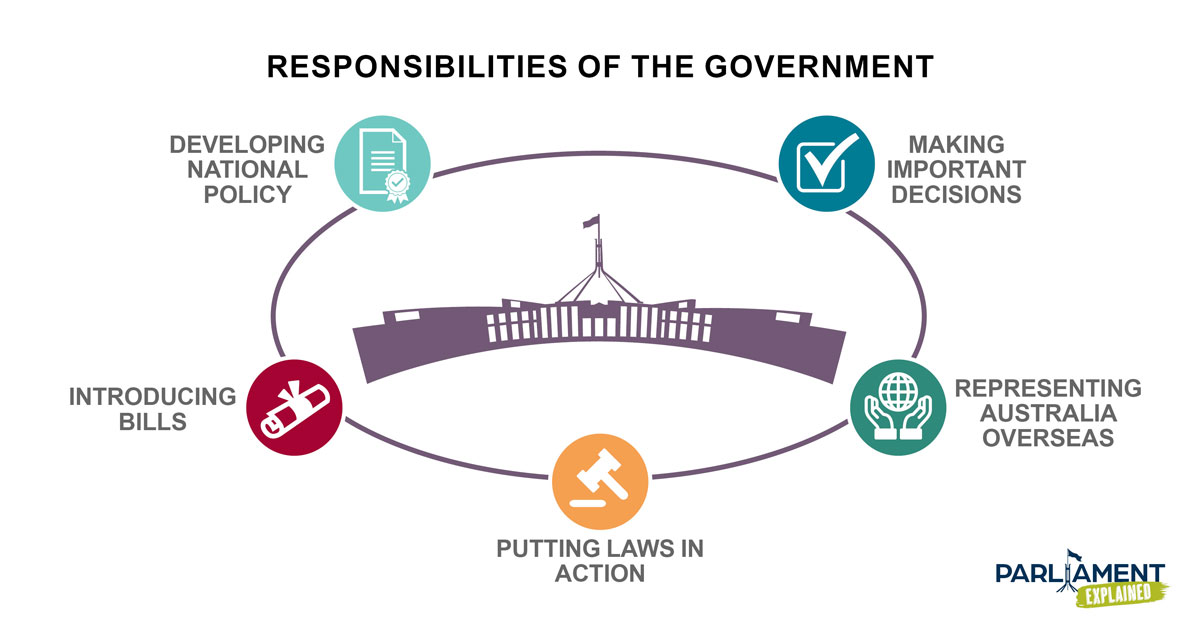A system of government is the structure for how a country is run. Some examples of different systems of government are: democracy, communism, dictatorship, monarchy and republic.
What is Australia’s system of government?
Australia has a mixed system of government; it is both a representative democracy and a constitutional monarchy. It is also a federation of states.
A representative democracy is where citizens choose candidates to represent them in a parliament. For us, elections for the Australian Parliament are held approximately every three years.
In a constitutional monarchy, the monarch (King or Queen) does not have all the power—they must follow the country’s constitution. The Australian head of state is Her Majesty Queen Elizabeth II. The Queen appoints the Governor-General to act on her behalf.
A federation of states is where a group of states join together to form a single country. For us, the Australian Parliament has the power to make laws about national matters such as defence, immigration, trade and foreign affairs. The states and territories make laws for state issues such as education, police and hospitals.

Image: The Australian System of Government. Courtesy of the Parliamentary Education Office
How is government formed?
At a federal election, the party or coalition of parties with the support of the majority of members elected to the House of Representatives becomes the government. They remain the government until they lose the support of the majority of members, which rarely happens outside of a federal election.
Although government is formed in the House of Representatives, there are also members of the government in the Senate. The government may or may not hold the majority of seats in the Senate.
What is the difference between majority and minority government?
Usually, after a federal election a single party or coalition of parties has the support of more than half of the members in the House of Representatives. This is known as a majority government.
If no political party or coalition achieves a majority of seats in the House of Representatives, the result is called a hung parliament. It is still possible for a government to be formed if a majority can be achieved through agreement with independent and/or minor party members. This type of government is known as a minority government.
What are the responsibilities of the Australian Government?
The responsibilities of the Australian Government include:
- Developing national policy, for example, plans for managing trade, foreign affairs, immigration and the environment.
- Introducing bills – ideas for new laws or changes to existing ones – into Parliament.
- Putting laws into action, through government departments.
- Making important decisions on behalf of Australians, such as whether or not to send Australian troops to war zones.
- Representing Australia overseas, through key spokespersons such as the Prime Minister and the Minister for Foreign Affairs.

Image: Responsibilities of the Government
Who are the people in the government?
The leader of the Australian Government is the Prime Minister, who is a member of the House of Representatives. They are elected by their party to lead their team and have the power to choose other members of the government for important roles.
Ministers are members of the government who have been given an area of responsibility for how Australia is run, such as health, infrastructure and social services.
Members of the government who are not ministers are called backbenchers. They do a range of work for the government, including researching, participating in committees, making speeches and voting on bills.
Want more information?
The Parliamentary Education Office develop and maintain resources to educate Australians about, and inspire their enthusiasm for Australia’s parliamentary democracy. Check out their resources on their website.
Parliament Explained series
Across the next six months, the About the House team is exploring the topics such as: democracy, federation, government and parliament.
Follow our series on our Facebook Page.